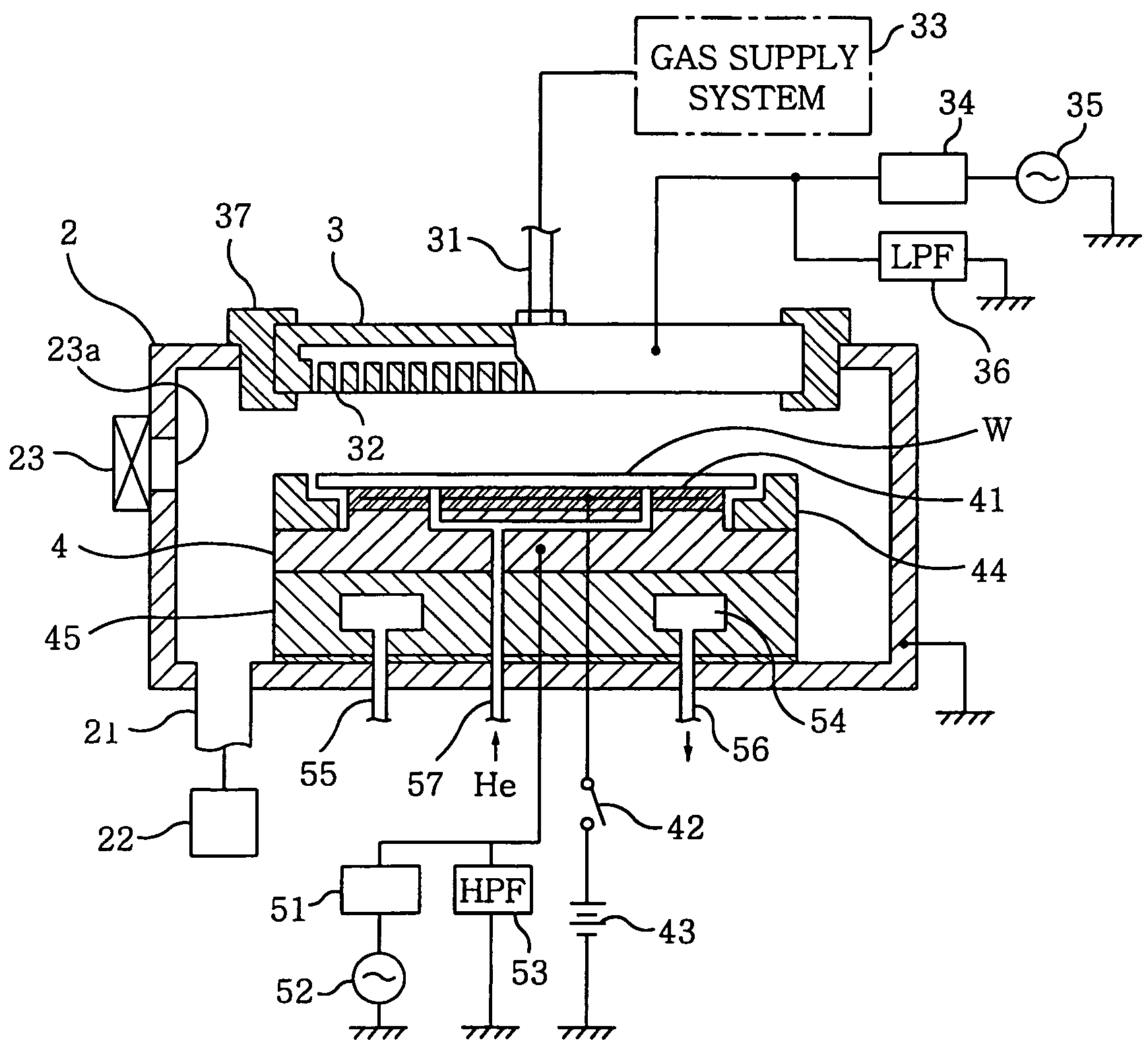Plasma etching method
a technology of etching and plasma, which is applied in the direction of chemistry apparatus and processes, electric discharge tubes, semiconductor devices, etc., can solve the problems of reducing yield in both cases, new problems may occur, and so as to reduce striation at etched portions, improve processing shape, and suppress the effect of widening an upper portion of a recess
- Summary
- Abstract
- Description
- Claims
- Application Information
AI Technical Summary
Benefits of technology
Problems solved by technology
Method used
Image
Examples
experiment 1
[0048]An etching was conducted on a wafer having a surface layer as shown in FIGS. 2A and 2B by using the plasma processing apparatus shown in FIG. 1, wherein holes 71 of a resist mask 7 were arranged in a zigzag pattern and each had an elliptical shape, as shown in FIG. 3. The film thickness of the resist mask 7 was 500 nm; the longer diameter D1 and the shorter diameter D2 of each hole 71 were 300 nm and 250 nm, respectively; and an interval d between the holes 71 was 100 nm. Further, a SiO2 film 62 to be etched was formed of a TEOS raw material to have a thickness of 2000 nm by a CVD. The processing conditions were as follows:[0049]a. Processing conditions for etching an antireflection film the high frequency power of the upper electrode:[0050]60 MHz, 1500 W the high frequency power of the lower electrode:[0051]2 MHz, 400 W the processing pressure: 3.3 Pa (25 mTorr) the processing gas: CF4 / Ar / O2=70 / 750 / 15 sccm[0052]b. Processing conditions for etching the SiO2 film the high frequ...
example 1-1
B. EXAMPLE 1-1
[0057]Under the above processing conditions, the flow rates of Ar and Xe were set to be 1250 sccm and 150 sccm, respectively.
example 1-2
C. EXAMPLE 1-2
[0058]Under the above processing conditions, the flow rates of Ar and Xe were set to be 1150 sccm and 250 sccm, respectively.
PUM
| Property | Measurement | Unit |
|---|---|---|
| distance | aaaaa | aaaaa |
| diameter | aaaaa | aaaaa |
| diameter | aaaaa | aaaaa |
Abstract
Description
Claims
Application Information
 Login to View More
Login to View More - R&D
- Intellectual Property
- Life Sciences
- Materials
- Tech Scout
- Unparalleled Data Quality
- Higher Quality Content
- 60% Fewer Hallucinations
Browse by: Latest US Patents, China's latest patents, Technical Efficacy Thesaurus, Application Domain, Technology Topic, Popular Technical Reports.
© 2025 PatSnap. All rights reserved.Legal|Privacy policy|Modern Slavery Act Transparency Statement|Sitemap|About US| Contact US: help@patsnap.com



